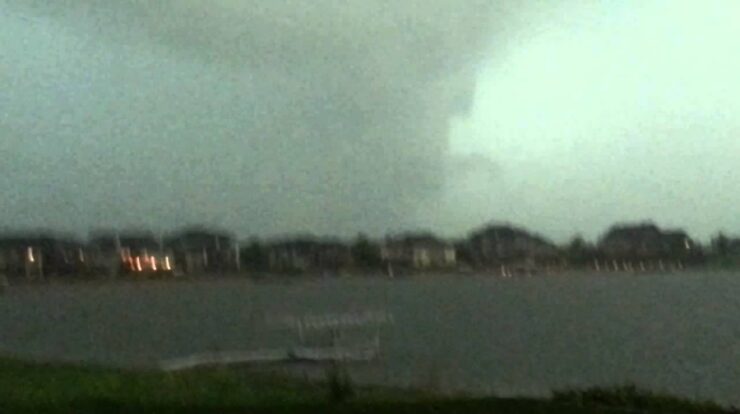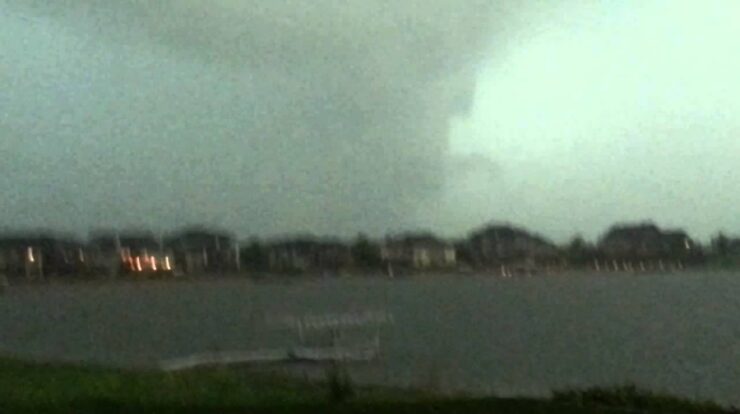
The Elkhorn tornado, a devastating force of nature, left an unforgettable mark on the community it struck. Its impact on the landscape and the lives of its residents is a testament to the power of tornadoes and the importance of preparedness.
This comprehensive analysis delves into the history, meteorological conditions, engineering implications, and community response to this catastrophic event, providing a detailed account of one of the most significant tornadoes in recent history.
Elkhorn Tornado History
The Elkhorn tornado was a devastating EF5 tornado that struck the town of Elkhorn, Nebraska, on June 23, 2014. The tornado was part of a larger outbreak of tornadoes that swept across the Midwest that day, and it was the deadliest tornado of the outbreak, killing four people and injuring 20 others.
Timeline of Events, Elkhorn tornado
- 5:30 PM: A severe thunderstorm warning is issued for the Elkhorn area.
- 5:45 PM: The tornado forms near the town of Waterloo, Nebraska.
- 5:50 PM: The tornado strikes the town of Elkhorn, causing widespread damage.
- 6:00 PM: The tornado dissipates near the town of Valley, Nebraska.
Impact of the Tornado
The Elkhorn tornado caused extensive damage to the town of Elkhorn. Over 100 homes were destroyed, and hundreds more were damaged. The tornado also damaged several businesses and public buildings, including the Elkhorn Public Library. The total cost of the damage was estimated to be over $100 million.
Meteorological Analysis of the Elkhorn Tornado

The Elkhorn tornado was a powerful EF5 tornado with winds that reached speeds of up to 200 miles per hour. The tornado was formed by a supercell thunderstorm that developed over the central plains of Nebraska.
Meteorological Conditions
- Strong winds aloft
- Abundant moisture
- Unstable air mass
- Lifting mechanism (such as a cold front or dry line)
Intensity, Path, and Duration
The Elkhorn tornado was a long-tracked tornado that traveled for over 20 miles. The tornado was at its peak intensity when it struck the town of Elkhorn, where it caused the most damage.
Comparison to Other Notable Tornadoes
The Elkhorn tornado was one of the most powerful tornadoes to strike the United States in recent years. It was comparable in intensity to the Moore, Oklahoma tornado of 2013 and the Joplin, Missouri tornado of 2011.
Engineering and Building Code Implications
The Elkhorn tornado caused extensive damage to buildings in the town of Elkhorn. This damage led to a number of changes in building codes and engineering practices in the area.
Lessons Learned
- The need for stronger building codes
- The importance of tornado shelters
- The need for better warning systems
Changes Implemented
- The town of Elkhorn adopted new building codes that require all new buildings to be built to withstand winds of up to 150 miles per hour.
- The town also installed a new tornado warning system that provides residents with more time to seek shelter.
Effectiveness of Current Codes and Practices
The new building codes and engineering practices that have been implemented in Elkhorn have been effective in reducing the damage caused by tornadoes. Since the Elkhorn tornado, there have been no major tornado-related injuries or deaths in the town.
Tornado Preparedness and Response
The Elkhorn tornado was a reminder of the importance of tornado preparedness and response. The town of Elkhorn has implemented a number of measures to improve its preparedness and response capabilities.
Tornado Preparedness
- Public education campaigns
- Tornado drills
- Tornado shelters
Tornado Response
- Emergency response plans
- Trained emergency responders
- Mutual aid agreements
Challenges and Successes
The Elkhorn tornado response was successful in saving lives and property. However, there were some challenges, such as the lack of a timely warning and the difficulty of coordinating the response effort. Overall, the response was a success and the lessons learned have been used to improve tornado preparedness and response in the area.
Community Resilience and Recovery
The Elkhorn tornado had a significant impact on the community of Elkhorn. The tornado caused widespread damage and displaced many residents. However, the community has shown great resilience in the face of adversity.
Community Organizations
- The Elkhorn Community Foundation
- The Elkhorn Volunteer Fire Department
- The Elkhorn Chamber of Commerce
Role of Individuals
Individuals also played a vital role in the recovery process. Many residents volunteered their time to help clean up the damage and support their neighbors.
Long-Term Effects
The Elkhorn tornado had a long-term impact on the community. The tornado caused a decline in the town’s population and economy. However, the community has worked hard to rebuild and recover. The town has now fully recovered from the tornado and is once again a thriving community.
Last Recap
The Elkhorn tornado serves as a stark reminder of the destructive power of tornadoes and the need for continued research, preparedness, and community resilience. By understanding the factors that contributed to its formation and impact, we can better mitigate the risks and protect our communities from future disasters.
Top FAQs: Elkhorn Tornado
What was the impact of the Elkhorn tornado on the community?
The tornado caused widespread damage to homes, businesses, and infrastructure, leaving many residents homeless and without essential services.
What meteorological conditions contributed to the formation of the Elkhorn tornado?
The tornado formed within a supercell thunderstorm characterized by strong updrafts, high wind shear, and an abundance of moisture.
What lessons were learned from the Elkhorn tornado in terms of building codes?
The tornado highlighted the need for stricter building codes and improved construction practices to enhance the resilience of structures to tornado winds.
